Do I contradict myself?
Very well then, I contradict myself,
(I am large, I contain multitudes).
— Walt Whitman (Song of Myself, 1855 Leaves of Grass)
I call my view of self “Many-Selves–No-Self” — its is a view similar to insights found both in cognitive science and in some Buddhist psychologies. Many-Selves–No-Self resembles the computational theory of mind which many popular science writers have written about:
- Marvin Minsky: The Society of Mind (1987) — M.I.T. (Artificial Intelligence)
- Robert Ornstein: The Roots of Self (1993) — Stanford University
- Steven Pinker: How the Mind Words (1997) — M.I.T (Psychology)
But my version of a computational model of mind has a Buddhist flavor. Some forms of Buddhism and Hinduism contend that we have no substantial self — “No Self”. They are right that there is No [one-stable-uintary] Self, but I think there are Many Selves. Thus, it is not necessary to be flagrantly paradoxical by saying there is No Self. In the Buddhist view and my view, our normal understandings of self is deluded — self-deluded. Many forms of religious mysticism have expressed similar insights.
I will now try to illustrate my model of Many-Selfs.
 Let the orange polygon (right) represent your mind. The yellow dots (stars) represent modules or functions in your mind. A function can be a belief, tendency, a habit or a skill your brain/mind has. Indeed, the modular view is too simple — instead it is complex networks, but for simplicity sake, we will discuss them as discrete modules.
Let the orange polygon (right) represent your mind. The yellow dots (stars) represent modules or functions in your mind. A function can be a belief, tendency, a habit or a skill your brain/mind has. Indeed, the modular view is too simple — instead it is complex networks, but for simplicity sake, we will discuss them as discrete modules.
Of course your mind has many more functions (yellow dots) than I have illustrated here, but for sake of illustration, imagine you only have these few functions.
 Next (left), imagine that there are a few functions that you rarely use. The ones you commonly use are in the purple oval — you consider this to be the “real” you. Imagine that these rarely-used traits are ones that you may have expressed in the past, but you haven’t acted on in years. They are traits you thought you grew out of years ago. So what you consider to be your “real you” is within the purple oval.
Next (left), imagine that there are a few functions that you rarely use. The ones you commonly use are in the purple oval — you consider this to be the “real” you. Imagine that these rarely-used traits are ones that you may have expressed in the past, but you haven’t acted on in years. They are traits you thought you grew out of years ago. So what you consider to be your “real you” is within the purple oval.
 But then imagine that you bring a close friend to a family get-together at your childhood home with all your siblings, aunts, uncles, cousins etc … Your friend notices a change in you at the get-together. She states she sees a side of you which she has never seen before. You feel it too, but can’t explain it. Of course you are still “you”, but you seem to slip back into old childhood behaviors when arguing with your siblings. That “you” is represented by the blue oval (right) where you have revitalized those two supposedly dormant traits and one of the traits from your purple self is turned off (or toned way down). Thus another self emerges.
But then imagine that you bring a close friend to a family get-together at your childhood home with all your siblings, aunts, uncles, cousins etc … Your friend notices a change in you at the get-together. She states she sees a side of you which she has never seen before. You feel it too, but can’t explain it. Of course you are still “you”, but you seem to slip back into old childhood behaviors when arguing with your siblings. That “you” is represented by the blue oval (right) where you have revitalized those two supposedly dormant traits and one of the traits from your purple self is turned off (or toned way down). Thus another self emerges.
There are countless times where we can see the many-selves unmasked. The unmasking is apparent when a person, and those around them, are surprised by the odd actions of someone they thought they understood. Here are a few examples of when a person acts “out of character” similar to my above example of dropping back into childhood behavior :
- In an emergency, she does something she would normally never do.
- She kills someone in a “fit of passion”.
- She completely deceives long-term trusted friends to hide shame.
- After winning a million dollars, she takes on a different behavior.
- She is observed to be completely different at a class reunion.
It is such changes in self that makes for statements like:
- “I don’t know what came over me”
- “I couldn’t believe what I said”
- “That wasn’t me.”
- “I don’t know what came over me”
- “I shocked myself”
- “I felt like a different person”
In actuality, they are surprised only because they are under the illusory spell that they have “one true self”. They don’t understand the way mind strings together traits to meet different settings — to form new selves. We are different at work, home, church, clubs, with family etc… Some people shift less than others, be we all shift.
 In my “Many-Selves, No-Self” model of mind, instead of “one true self”, there are many selves. Actually, my mental model is not ovals, but constellations. Each function is related to another function by a connection (a line, in my diagram to the left). Thus I can re-illustrate my model of self as a constellation of functions of the mind or modules of the mind. In the above illustration, I simple put an purple oval around this constellation. But you can imagine that a model with many selves and thousands of functions, the oval illustration would fall apart but then, the constellation model would appear a jumble also. This captures the complexity of networks and systems a little better.
In my “Many-Selves, No-Self” model of mind, instead of “one true self”, there are many selves. Actually, my mental model is not ovals, but constellations. Each function is related to another function by a connection (a line, in my diagram to the left). Thus I can re-illustrate my model of self as a constellation of functions of the mind or modules of the mind. In the above illustration, I simple put an purple oval around this constellation. But you can imagine that a model with many selves and thousands of functions, the oval illustration would fall apart but then, the constellation model would appear a jumble also. This captures the complexity of networks and systems a little better.
 Continuing with the constellation illustration: When an individual gets into a different environment with significantly different triggers — a family get-together with people with a long past history in an old setting (home). Old traits are triggered and old linking of existing traits re-link. And thus the light blue self — a new constellation of traits — emerges. Most of the functions (modules) are still present in the “new self” except one trait drops out and two old traits are re-enlisted. The linkages also change. It is these linkages that are key.
Continuing with the constellation illustration: When an individual gets into a different environment with significantly different triggers — a family get-together with people with a long past history in an old setting (home). Old traits are triggered and old linking of existing traits re-link. And thus the light blue self — a new constellation of traits — emerges. Most of the functions (modules) are still present in the “new self” except one trait drops out and two old traits are re-enlisted. The linkages also change. It is these linkages that are key.
A common objection to materialism is that the sum of the parts do not equal the whole, which is indeed true. However, it is not the parts alone that make an organism (or a machine), but it is the parts and how they relate to each other. This web relationships (nested functionality) is the magic of the machine.
What makes the model non-intuitive is that part of the brain also weaves the illusion of a continual self. This continual self becomes our identity which is the “you” of normal conversation. It is true in the sense that all these “you-s” are happening in one brain, but not in the sense that your personality and behavior are stable. It is a useful illusion, but it is false, because there is no true self. Instead, we have many selves.
The hexagon in my model is the individual. And the individual is anchored to the world of finances, family, tribes, safety, and pleasures via lines from all the functions. It is these external anchorings that trigger most shifts between different selves. But some people can shift due to illness or even by pure imaginations — as skillful actresses and actors can attest.
It is this complexity of Self that makes many philosophical discussions difficult. And it is this picture that generates apparently paradoxical statements like: “Many-Selves, No-Self”. But the paradox only exists because we don’t understand the true nature of mind.
I hope this explanation has worked. This idea of Many-Selves, No-Self is core to my philosophy of religion, language and relationships. Without understanding this view, many of my writings may appear unnecessarily enigmatic.
________________
Related Posts:
- Beliefs as Circuit Components : A Model to help understand my view
- Your Inner Theist: Even Atheists can have a Theist side
- The Problem with You : Again, my philosophy of Self
- Web of Beliefs: How our beliefs hold up our lives
- Beliefs, What are they: A visual model of beliefs, person, brain, society


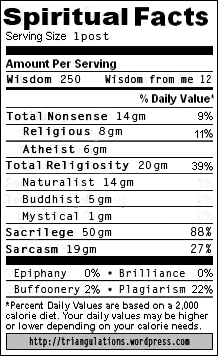



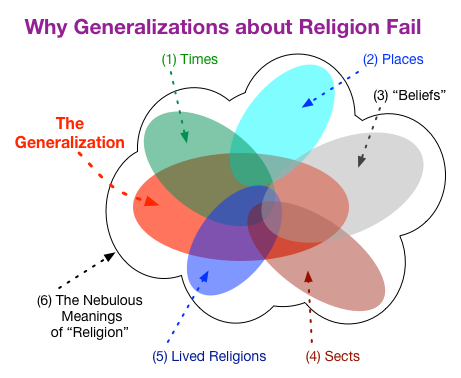


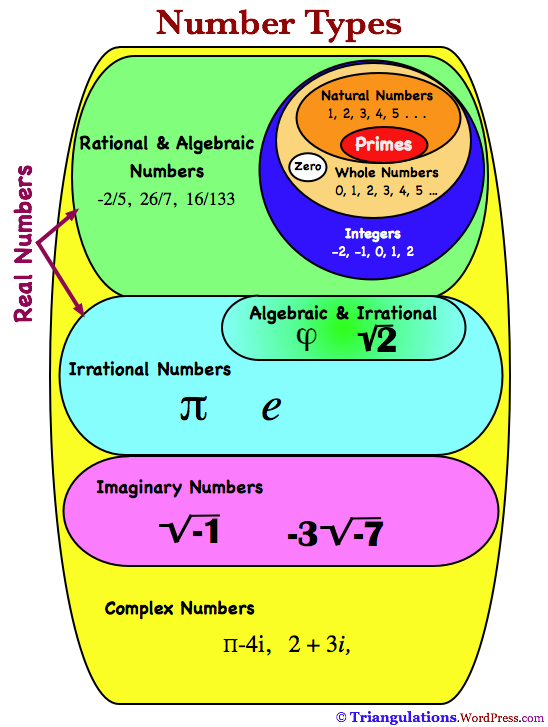
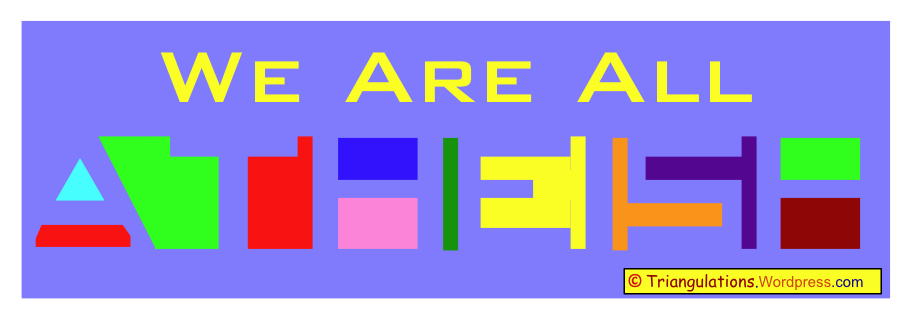

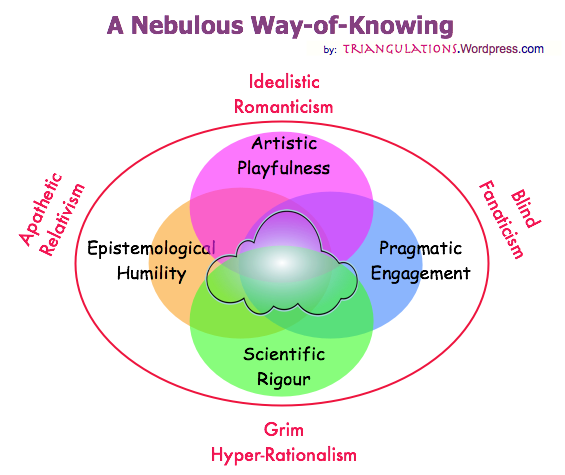






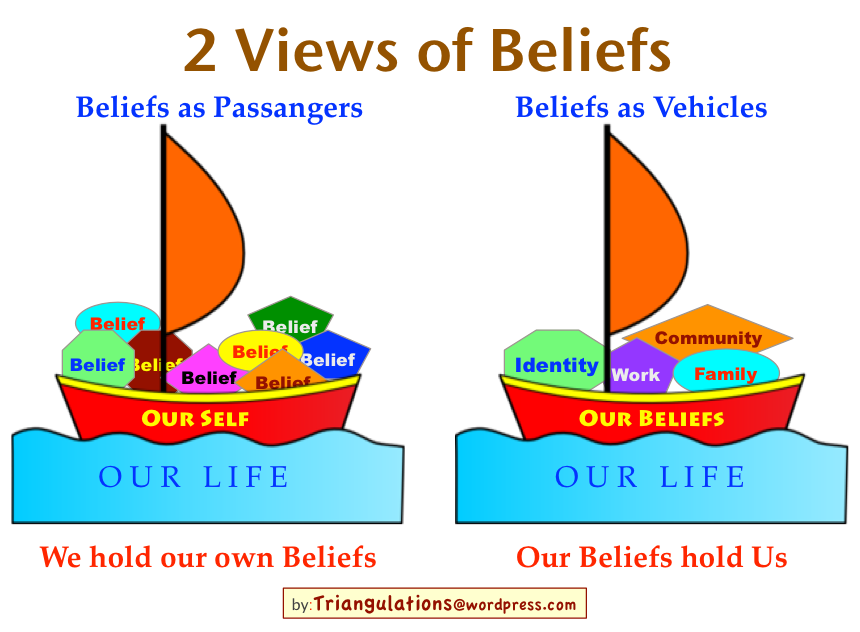







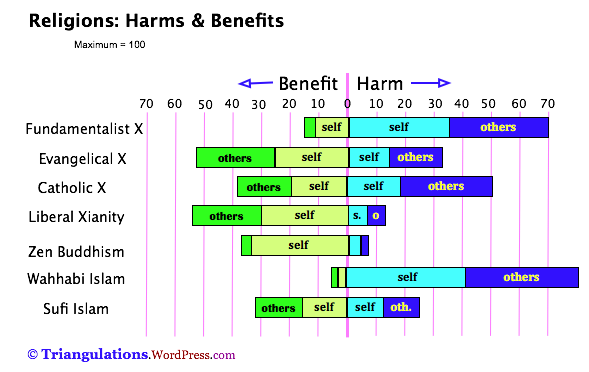



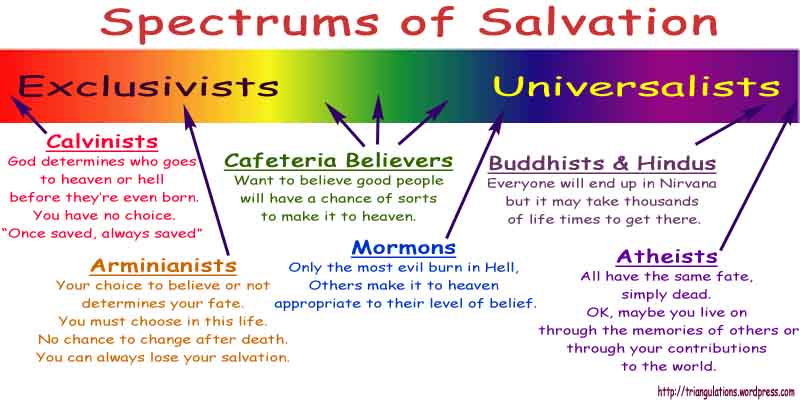




I think it requires more active brain cells than I possess right now…
Howdy Sabio,
I like your presentation.
“…the model I visualize is not ovals, but constellations.”
Constellations is good, but an imprint of the whole sky star pattern may be more like it.
I see them as dynamic holo-movies involving the whole mind/body experience. They are tuned to environmental through waves of coherent input. The internal holo-movie mimics the external, which triggers sets of these patterns as potential behaviors linked to the situation.
cheers,
jim
@ jim — Thanx. Draw me a pic and show me your version.
I’ve been working on that… simple Flash animations that show biological info processing in action. Your diagrams are great. I think they make a good schematic of how ideas, memory and reality interact.
Like Rupert Sheldrake’s Morphic fields, patterns that interact to form real pathways that become tissue, especially the networks like nerves, circulatory system, muscles and lungs.
I have long noted how different folks act when they are at family reunions and such. Then there is the difficulty some folks have in readjusting to civilian life after the military. I experienced that first hand. These patterns are hard to change. They are like different personality sets.
Looking forward to more…
cheers,
jim
@ Jim (Insomniac)
Though I am not highly verse in Rupert Sheldrake’s theories, they strike me as similar to many of the efforts of many New Age religionists in their effort to find anthropocentric magic permeating the universe. The reflex to find such events seems problematic from the start, but I’d love to be surprised.
Putting the politics of belief aside for now, i see your ovals as sub-fields within a field. I don’t see that we have any other choice for the function of consciousness or any other form of biological information processing, besides some sort of field.
Are your constellations not fields?
cheers,
jim
Hey Jim !
I’d have to hear your definition of a “field” to know if my images, expressed in my simple metaphor, match up to the words you use for your concepts.
Your word “field” sounds like you want to use it in a specialized way. (I believe words are tools, not things to be discovered)
And you sound very sophisticate in systems theory — I am not, I am afraid. But I find it fascinating.
But in my model, each module/function is eventually mindless and mechanical. Thus, to me, there is no distinction between a biological system and a physical system. A biological system is just a certain type of physical system.
Now, I am first to admit that we have much to understand on what is the nature of physical systems too.
So, in these kind of conversations, the problem buying into your word of “field” may mean it comes packed with all sorts of nuances in your mind that don’t exist in mine. I certainly would say that the ovals were a sub-SET of the total modules, but that should be obvious. So when you ask me are they “fields?”, I am puzzled by the intent of the question. Did I explain my puzzlement clearly?
Howdy Sabio,
Yeah, we are coming from totally different directions, and therefore agree, but not really.
“Thus, to me, there is no distinction between a biological system and a physical system. A biological system is just a certain type of physical system.”
I agree, there is no difference from a systems standpoint. However, you assume a mindless universe, while mine is intelligent and responsive. It has been my experience that this is true. Your experience tells you different. So, it is way more than just some nuances that set us apart.
Happy trails,
jim
Happy trails to thee too.
Yeah, I figured we had that sort of difference.
I just worked in a hospital all day — the universe did not seem intelligent and responsive. If it is, she is not a kind woman !
How about that… we agree again. 8)
As a system she can be rather indifferent.
cheers,
jim
@Jim
I feel beliefs are strung together to support attitudes, actions and such. But the beliefs themselves, can’t be judged in and of themselves when you are trying to understand a person. Instead, it is the relationship between the myriad of beliefs and how they anchor into a person’s life.
I imagine (guessing) that you agree here too.
And thus it is curious that though you and I may hold some beliefs (eg. about a life , intelligent universe) or some use of words very differently but the outcome of our own particular weaves makes us more similar than some who may say they totally agree with me.
Complex systems are indeed funny things.
Thanx for writing — Sabio
And as you point out, our “myriad of beliefs” come in sets that vary according to the situational context. They are not just ours, but something we share with our fellows, and develop in an intimate interaction with our immediate environment.
This is interaction between elements of a system, feedback loops that constantly project and verify the state of the relationship. We are accustomed to looking perception being a one way street, but the systems model shows an interaction involving the exchange of information between the individual agents and their surroundings.
In the systems view, mankind is just another species that has to look after its own survival. Natural selection is a realtime test of a species’ ability to survive… make poor health or other risky choices, land in the hospital or worse. Kindness from the system would just skew the results.
cheers,
jim
Thought this analogy might help. Many selves is a hard one to follow for me and I like to think that there is one true self.
Another analogy that might work is found in chemistry. Each atom contains it’s own set of substance, depending on what atom you may be. The characteristics of that atom; electrons, neutrons, protons, quarks, and gluons help to determine what type of person you may be. When interacting with other people and/or other atoms and depending on what type of state you may be in will determine a connection or not. To go even deeper each atom has a set of planes or planar directions, so if you were a hydrogen, (the workhorse of all atoms) you only have one electron and for simplicity only work in the x,y, and z plane even though you contain all the planes. As you add more electrons, protons and neutrons the atom changes. Obviously when connecting with other atoms a molecule is formed and life is good.
Hope it helps.
@ Renee — the temptation to thing there is “one true self” is a universal temptation and a strong cognitive illusion”. I am not sure what to do with your atom model. Hope it works for you.
I’m not sure what you meant that “one true self” is a universal temptation and a strong cognitive illusion”. But, if you meant the analogy falls short in allowing the person to change, then I would agree with you. Your analogy of “many selves” left me feeling schizophrenic so I was trying to sort through why I interact with people one way, but change when I interact with people another way. Do I change or do I stay true to who I am? If I change then I have no thought of my own and will tend to follow whatever party I am with, if I don’t change then I become isolated and either others will follow me or I will have no friends.
So, another analogy came to mind and that is a model found in our bodies which I thought you might be able to relate too. If you take the molecule oxygen, nitric oxide and carbon monoxide they all interact with hemoglobin differently. Oxygen being the best, nitric oxide scientists are trying to figure out is good or bad (at least when I was studying it 10 yrs ago – sorry may be out of date for today), carbon monoxide obviously is extremely bad. Each molecule although very similar is very different in function and when interacting with hemoglobin will change the function of hemoglobin somewhat.
Oxygen accomplishes the function to provide energy to our bodies, nitric oxide is a little unclear, does it cause vasodilation/vasoconstriction, why is it found in higher levels in asthmatic patients, etc. Carbon monoxide, however, binds up the hemoglobin and seizes any function the hemoglobin was suppose to have.
Depending on what molecule you may be you will be good for hemoglobin or bad. Therefore you will interact with different people according to how you are made, for some molecules you may be bad for others you may be good. The true art would be that whatever molecule you are that you would somehow leave the other molecule and yourself in a better state then when you found it. This would be an incredible gift…..
Renee, I appreciate your thoughts. You models are fun, but they don’t capture what I am trying to capture.
My model illustrates that there is not “true you”. I understand how you say it makes you feel schizophrenic — in true, we are schizophrenic in that sense, but there is a part of the brain that hides that from us. And if that part is sick, it exposes the truth.
Each model you come up with allows different interactions with people, but it hangs on to a hope of a “real self” with does not exist. Though we all tend to think of having a “real self”, it is illusory. Many situations reveal this. I will make a short list of times when a person is surprised by their own behavior to the degree that they say, “I don’t know what came over me”, “I shocked myself”, “I felt like a different person” or the like.
For instance, when a person
* drops back into childhood behavior at a family reunion
* in an emergency, does something they would normally never do
* kills someone in a “fit of passion”
* complete deceives long friends to hide shame
* become different after brain injury
* become different as they age
Thanks for the post. I like this and I guess my goal would be to still be myself whether I had a brain injury, got older, or be in some type of emergency situation. Of course we would never know until those situations would come up what kind of reaction I will have and why I would have them, but the goal for me would be to remain the same and if I didn’t accomplish that goal to still pursue it somehow. The situation would probably help me to weave into the person I was suppose to be. Killing someone would be hard to understand and if I ever got that passionate to do something that incredible, then I would want to be killed…..life for life I suppose.
We are re-reading this post (my selves and I) for the 2nd or 3rd time. As you know, I have been a fan of this model of many selves. I see it in my young children constantly. But, what struck me today was this:
When I was 14 or 15 I fractured my skull along the occipital plate on the right side. I had contusions on my frontal lobe, but no severe bleed. I spent a long time in the hospital and suffered with Migraine Type headaches for months after the injury.
Prior to my injury I was almost purely an academic athlete. I was on a mission to play Division 1 college football and with any amount of luck, sign a pro contract. My parents, friends, coaches, aunts and uncle were very excited and hopeful of my future in football! I was a decent student, maybe a bit of an underachiever, but passable.
In the weeks following my accident everything changed. My life took a literal 180 degree turn. Almost overnight, I started to play guitar, started writing poetry. I had anger issues and felt a certain amount of disconnect from my peers. What was most striking was my sudden apathy toward athletics.
My brains modules had been so suddenly and traumatically shifted that I was in turmoil. All those people who were once my ardent supporters were now scratching their collective heads and pleading with me to return to my ‘old self.’ Of course, frustratingly this was impossible to do.
Anoat
Yeah, an earthquake can change the family room’s layout quite dramatically.
I do beleive that our many selves are periodically active and evolving throughout our life. That is why we change our ways and sometimes our believes in different stages or as we mature. Life pespective is not the same at 18 than at 40. If we had just one self it would be mutating extremely fast for development, it would be turmoil.
@ L. Rodriguez: Agreed. Well put.
I am sure it can be found in other places but in Thich Nhat Hanh’s book “The Heart of the Buddha’s Teaching” he talks about the Buddhist’s conception of no-self (anatman) as a quality of inter-being. He points out, from what I can remember, that our identifying mind is not really all that we think ourselves to be. I have written a few posts about similar ideas that you might find of interest – http://keithdonald.wordpress.com/2010/11/27/tat-tvam-asi/ –
I like the idea that you have that shows how an individual can wear many hats and be seen as “many-selves” but I think the idea can also be broadened to incorporate more of reality that they identify with.
@ Keith
Glad you like the idea.
I always say I am in Free Fall. Gathering structural ideas to pad or trim my personality as I learn about this or that. If one comes up with a bounce at death that shakes all ideas out of your head or if you are hooked into a set of memories that you still think is you and renter life with a predisposed pattern …. hmmm
@Sva Remlee,
I didn’t follow that. But it sounded like classic reincarnation mumbo-jumbo. Am I right?
Really good stuff Sabio. I just commented on your ‘Foreign tongue can morph your soul’ post with a reference to the ideas regarding self of Stanislaus Dehaene. He believes that a critical component of conscious thought is its one at a time restriction. This leads to a sense of self that is contingent on the context of the conscious thought that is momentarily “in charge.” Your oval and constellation concepts go along pretty well with this.
What I think is really interesting is why we are limited to one conscious thought at a time. According to DeHaene it’s because a conscious thought is something akin to a standing wave (like in a river with eddies and rapids). It’s an energy loop that can remain in affect for several seconds – long enough to access pertinent memories to string together enough coherent thoughts to build plans and execute them. It’s an incredibly impressive achievement of evolution. Not surprising that we’re one of the first lifeforms to get to the point of being able to do the amazing things we do. Also not surprising that we can do some things which are really dangerous. No one gave us a manual on how to operate this darn brain gizmo.
@ Joel McKinnon,
Yes, Dehaene looks like he copied some of my thoughts! 😉
But I think that conscious thought has a one-at-a-time restriction, but not so for the rest of the brain which cranks along on co-processors. Thus other thoughts intrude on us and surprise us. Do you follow? Perhaps Dehaene thinks the same?
Not sure what you think makes humans, unique compared to other primates or mammals (for instance)? It seems you were implying that it was “consciousness”.
Thanks again for the thoughtful comment.
Yes, that’s exactly right. The unconscious is always at work bring up bits and pieces of remembered minutia for the relatively tiny processor of the conscious mind to work with in its excruciatingly slow manner. Dehaene isn’t just a theorist, but an adventurous and hardworking experimental scientist and an amazing writer for someone writing in a second language. Early on in the book he emphasizes the importance of subjective experience and claims that it is essential to understanding consciousness. This used to be considered taboo in studying human psychology as if it was the fluff that had to be cleared out to get at the real processes that matter. Not so to Dehaene. He claims that consciousness is all about subjectivity and can’t be understood without careful attention to exactly how a person constructs their reality from the nature and nurture they’ve experienced. There were many times I had ‘a-ha’ moments when reading it as everything would start to click. Of course – now it makes sense what I’ve been doing all my life! That sort of thing. Can’t recommend it enough.
I really enjoyed Pinker’s book as well, but his is a very different style and approach. Let me know what else you like on these subjects and I’ll share a couple others that I’ve found illuminating recently. Mihaly Csikszentmihalyi’s Finding Flow, is a mind blowing study of the roots of cognitive effectiveness and just incidentally one of the only really helpful self-help books I’ve encountered. Another recent influence I’ve found somewhat transformative is Massimo Pigliucci, a scientist philosopher who started the blog Rationally Speaking which has now moved to Scientia Salon (http://scientiasalon.org/). The only book I’ve read by him was Answers for Aristotle but it was very very good. A great overview of philosophy and its intersection with cognitive science.
Yes, I’ve read Pigliucci.
If you want to write more — I suggest starting your own blog and simply linking to your thoughts there. The links on your name on this thread are dead-ends — so I deleted them.
I love interaction with my thoughts in the post, or questions.
Sorry about the dead links – I try to avoid that. I’ve actually had a blog called New Worlds for about seven or eight years now where I blog as ‘Max’ (my old band name). Of late I’ve had little time for it as I just started a new software gig at that place that makes all the iGadgets. Fortunately I have a couple of friends who take up the slack. It’s about as eclectic as you can imagine, which is pretty reflective of my personality. Of course, there are downsides to sharing a blogspace as you lose control of the flow. I’ve thought about starting something more personal and it may eventually happen if I can find a routine that makes better use of limited time. Have to put some of those Flow principles to work.
Howdy, I do think your website could possibly be having web
browser compatibility problems. Whenever I look at your web site in Safari, it looks fine however,
if opening in Internet Explorer, it’s got some overlapping issues.
I simply wanted to give you a quick heads up! Other than that, great blog!